Catalogue 2023-2024
Parcourez ci-dessous le catalogue 2023-2024 des Rencontres Internationales, ou effectuez une recherche dans les archives des oeuvres présentées depuis 2004. De nouveaux extraits vidéos sont régulièrement mis en ligne, les images et les textes sont également progressivement mis à jour.
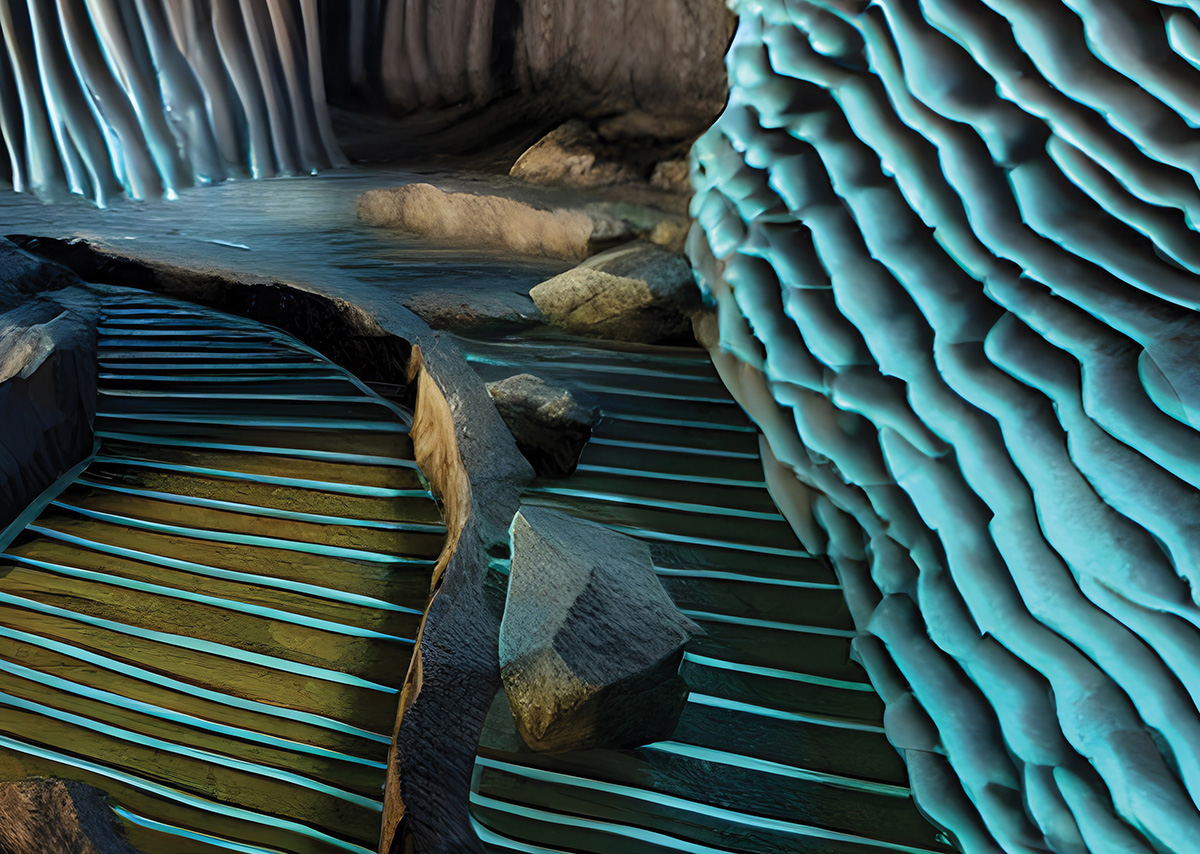

Thomas Hawranke, Lasse Scherffig
COLOSSAL CAVE ADVENTURE – THE MOVIE
Animation | mp4 | couleur | 55:33 | Allemagne | 2022
The project deals with one of the first text-based adventure games in computer game history. Colossal Cave Adventure was developed by Will Crowther in 1976 and is based on the spatial presence of Mammoth Cave in Kentucky. Crowther’s game completely avoids a visual representation of the cave – instead, text input and text response shape the cave in the player’s individual perception. The AI-based animated film is approximately 55 minutes long. The camera constantly moves downwards, digging through geological layers and exposing new cave spaces again and again. Every eight seconds, the AI system receives a new textual description. These descriptions are taken from Crowther’s source code from Colossal Cave Adventure in 1976, which contains a total of 379 inputs ranging from narrative descriptions of nature, to jargon from the vocabulary of speleologists, to single words meaning an object, a compass direction, or an exclamation.
Thomas Hawranke and Lasse Scherffig are two interdisciplinary artists collaborating at the fringes of art, technology, and science. Rooted in media archeology, animation, and computational art, their most recent work employs generative AI systems to question their aesthetic and epistemic foundations. They have previously collaborated within the artist group Paidia Institute and have exhibited and published internationally.


Miguel Hilari
Cerro Saturno
Doc. expérimental | hdcam | noir et blanc | 13:19 | Bolivie | 2022
A mountain range in fog and snow. Human absence, ancient sacred places. Traces appear: Dirt roads, antennas, transmission lines. Human faces, behind windows and rain. A city.
Miguel Hilari (1985. Aymara/German) is a documentary filmmaker. His work centers around migration, urbanization and history. It has played and was awarded at various international festivals. He lives and works in La Paz.
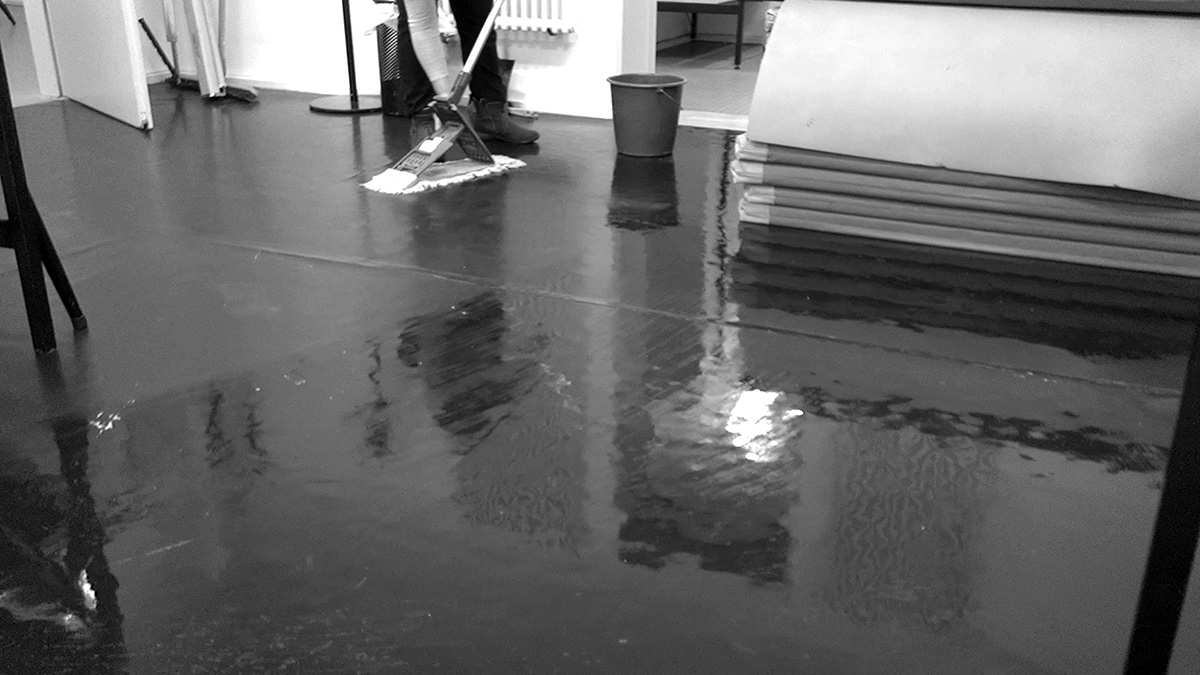

Jürgen Hille
AP 28-2
Vidéo expérimentale | mp4 | noir et blanc | 2:28 | Allemagne | 0
Meine Videoarbeit "AP 28-2" zeigt den Ort und die Institution "Alte Post" in Neuss. Das Gebäude wurde 1877 gebaut und diente bis ca. 1987 als städtisches Postgebäude. Ab 1989 ist darin das Kulturforum Alte Post mit einer kleinen Bühne untergebracht. Der Serviceraum hat sich zu einem kreativen Ort gewandelt. Ich zeige den "Tanz-Probe-Raum" im Obergeschoss mit einer Putzfrau in Aktion. Fotos aus dem Stadtarchiv Neuss. Ein bewegter kleiner Stein belebt die Szene akustisch.
1961 geboren in Düsseldorf 1980-86 Studium Freie Kunst, Kunstakademie Düsseldorf seit 1993 dokumentarische und experimentelle Videoarbeiten


Baba Hillman
Mary Bauermeister: Light and Stone
Film expérimental | super8 | couleur | 3:45 | Canada, France | 2022
Remembering my last visit with Mary in her garden of light, trees, glass and stone.
Baba Hillman grew up in Japan, Venezuela and Panama and works between France and the U.S.. She received a B.A. in French Literature from Duke University and an M.F.A. in Film and Performance from the University of California, San Diego. Her films and performance works explore memory, history, perception and the poetics and politics of place, language, and the body. She was co-director of Teatro Movimento in Florence, studied with Etienne Decroux and Jean-Pierre Gorin, and is Professor Emerita of Film at Hampshire College in Amherst, Massachusetts. Her films have screened widely at festivals and museums including the Museum of Contemporary Art, Los Angeles, FIDMarseille, Edinburgh Film Festival, Rencontres Internationales Paris/Berlin, Ann Arbor Film Festival, National Gallery of Art, Washington D.C., Anthology Film Archives, ICAIC Havana, Africa World Documentary Festival, Yaounde, MIX Brazil, and European Media Art Festival, Osnabruck, among others. She has received awards and grants from the French Ministry of Culture, the Whiting Foundation, the California Arts Council, and the Italian city governments of Florence, Lecce and Certaldo. In 2020, Hillman’s film Kitâb al-Isfâr: Book of the Journey, a feature-length film about near-death and mystical experiences in Andalucia, premiered at the FIDMarseille film festival and was selected for the Athens Avant Garde Film Festival. Earlier films by Hillman include Decroux’s Garden, and 5 Cité de la Roquette, part of a series of films connected to return, place and disappearance.


Gavin Hipkins
Nature Writing
Vidéo expérimentale | mov | couleur et n&b | 9:48 | Nouvelle-Zélande | 2022
Recorded at night with a humble camcorder over multiple excursions through indigenous and exotic flora, rhythmic observational studies chart real and imaginary wildernesses. Revisiting Thoreau’s Walden ideal, the sentimental appeal of taking an axe to the woods in white-settler colonies encounters postcolonial unease.
Gavin Hipkins (born 1968, Auckland, Aotearoa New Zealand) holds a Bachelor of Fine Arts from the University of Auckland and a Master of Fine Arts from the University of British Columbia, Vancouver. He is an Associate Professor of Fine Arts at Elam School of Fine Arts, the University of Auckland. His photography and moving image works interrogate how images create meaning through fragmentation and circulation. His work explores the nation state, particularly in colonised countries in an era of re-imagined communities and ideas of social and political utopia. His practice engages film as a cinematic art that blurs conventional genres of essay film, documentary and experimental narrative structures. Hipkins has exhibited widely in international exhibitions and film festivals including: CROSSROADS 2022, San Francisco Cinematheque (2022); Internationale Kurzfilmtage Winterthur, Switzerland (2021); 25FPS Festival, Zagreb (2020); Rencontres Internationales Paris/Berlin (2020); Videoex, Zurich (2019); The 9th Asia Pacific Triennial of Contemporary Art, Gallery of Modern Art, Brisbane (2018); International Film Festival Rotterdam (2018, 2015); International Short Film Festival Oberhausen (2017, 2016); The Jewish Museum, New York (2015); Edinburgh Art Festival (2014); Armory Film, New York (2012); Centre Pompidou, Paris (2011); Austrian Museum of Applied Art and Contemporary Art (MAK), Vienna, (2011).
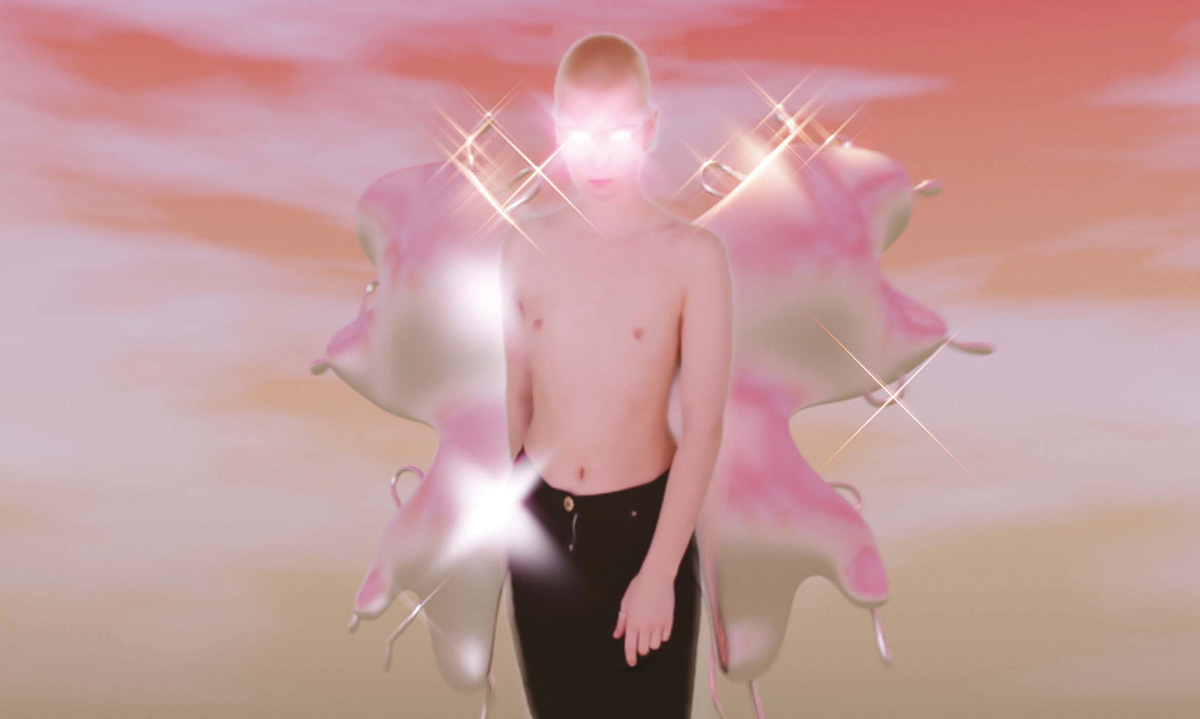

Noah Holtegaard
Glimmerstøv
Vidéo expérimentale | mp4 | couleur | 1:37 | Danemark, Suède | 2022
“Glimmerstørv” is a video work about transness, inspired by cartoons like Winx, Ben10 and Dragon Ball, which are cartoons about people transforming themselves in fantastic, luminous sequences and becoming a more magical version of themselves. I work with creating digital realities that can act as a virtual utopia for queer people, free from the constraints of our physical reality.
Bio Noah Holtegaard (b. 1999) is a transmasculine nonbinary artist and uses the pronouns they/them. Holtegaard completed their BFA in fine arts from HDK-Valand in Gothenburg in 2022 and began their MFA in media arts at the Royal Danish Academy of Fine Arts in Copenhagen the same year. In their artistic practice, Holtegaard primarily works digitally, which includes image manipulation, 3D modelling, animation, AR (Augmented Reality) and video. Holtegaard's work often revolve around queerness and transness. They describe how they want to give a voice to those who have never had a voice before, tell stories about transgender people that have never been told before, and show bodies that have never been shown before. In their art, Holtegaard dreams of creating a queer utopia in a digital space without the limitations of the physical world.


Devin Horan
The Animals Are Sick With Love
Fiction expérimentale | hdv | couleur | 47:41 | USA, Géorgie | 2023
From the slaughter-bench to blessedness - Human sacrifice and the meaning of the earth - The congested planet is moaning, boxes all over the world are moaning - But - have you heard - the good news?
Devin Horan worked at Lithuanian filmmaker Sharunas Bartas’ Studio Kinema on the crime road-film Eastern Drift (Indigene d’Eurasie) (Berlin Forum section 2010). After that he made his first film, Boundary (2009), which was named one of the top ten films of the last decade in Cinemascope’s poll “The Decade in Review”. His next film, Late and Deep (2011), premiered in the Horizons section of the 68th Venice Film Festival and was nominated for the Berlin National Gallery’s Preis für Junge Filmkunst (Young Film Art Award) in 2013. Akra (2017), a surreal black comedy, was filmed in Tbilisi and Imereti, Georgia, with an international cast and crew, starring mostly Georgian actors. He was the editor of Pages of Natural History, directed by his long-time collaborator Margherita Malerba, which premiered at the 30th edition of FID Marseille International Documentary Festival, and he is currently co-writing and editing her new film The Book of Hours. Grodek was a film in two versions. The first premiered again in IDFA’s Paradocs in 2014. The new version premiered at the 33rd FID Marseille Festival in 2022 in the Flash Competition. He is also a visual artist whose work has been published in two books by Infinity Land Press. The Animals Are Sick With Love was finished in July 2023. He also has a massive visual art project entitled Insomnia of Worlds which will slowly become public beginning in autumn 2023. Since 2018 he has been teaching courses in directing, screenwriting, and subversive cinema at the Caucasus School of New Cinema, the Georgian Institute of Public Affairs, and Free University in Tbilisi, and at the Moscow and St. Petersburg Schools of New Cinema. He is also teaching an ongoing series of public courses in Tbilisi called The Act of Seeing, Found Footage Cinema, The Call of the Wild, The Forest Passage, Fascinations, and Adventures. (https://www.facebook.com/DocumentaryCourseSeriesTbilisi)
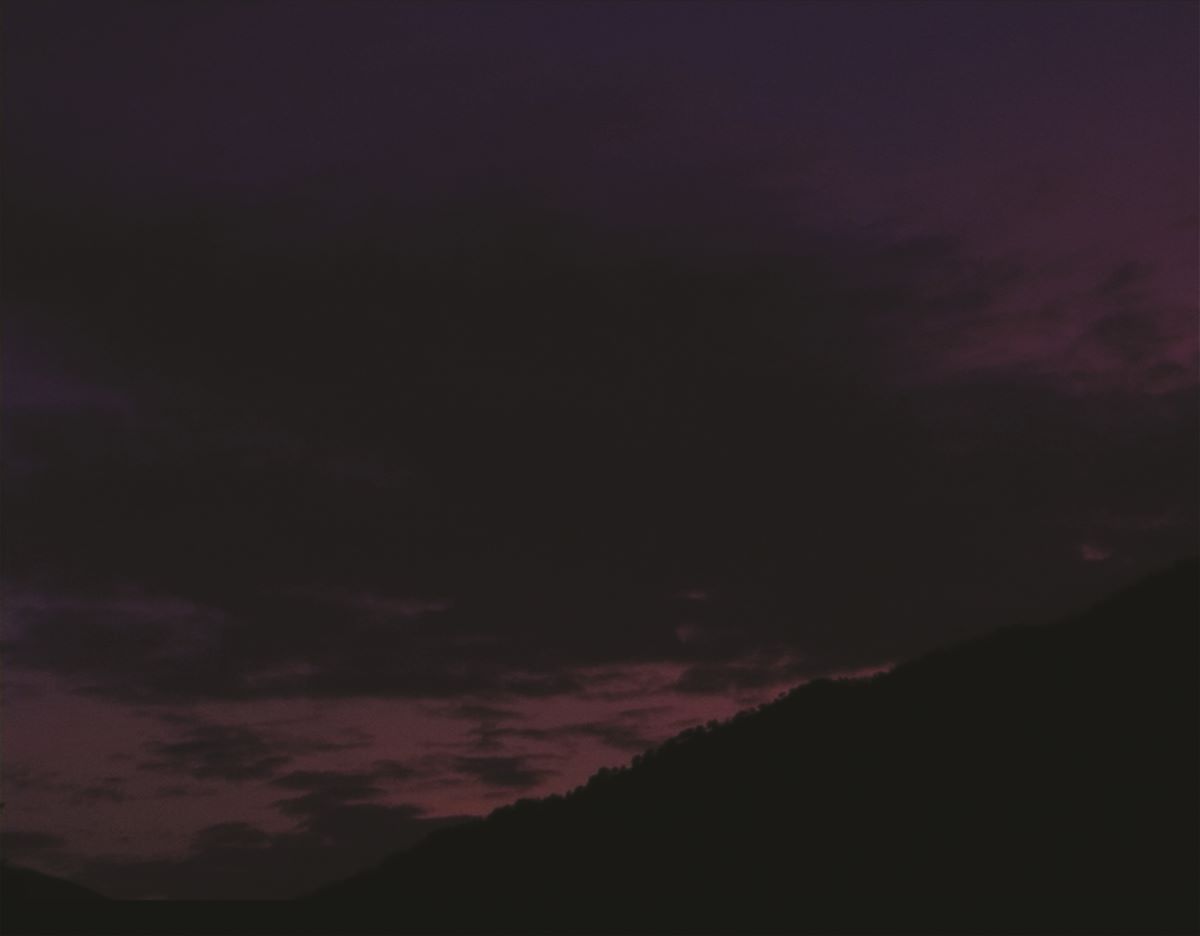

Devin Horan
Grodek
Doc. expérimental | hdv | couleur | 9:35 | USA, Italie | 2022
thirteen images two texts two pieces of music the cast of characters are all young soldiers a painted death mask stares into the future at the unborn generations a giant roams the landscape like some fucking asshole stalking the whole human race he wades through an endless river of blood and piss in full awareness of the animal drives rolling life through time
Devin Horan worked at Lithuanian filmmaker Sharunas Bartas’ Studio Kinema on the crime road-film Eastern Drift (Indigene d’Eurasie) (Berlin Forum section 2010). After that he made his first film, Boundary (2009), which was named one of the top ten films of the last decade in Cinemascope’s poll “The Decade in Review”. His next film, Late and Deep (2011), premiered in the Horizons section of the 68th Venice Film Festival and was nominated for the Berlin National Gallery’s Preis für Junge Filmkunst (Young Film Art Award) in 2013. Akra (2017), a surreal black comedy, was filmed in Tbilisi and Imereti, Georgia, with an international cast and crew, starring mostly Georgian actors. He was the editor of Pages of Natural History, directed by his long-time collaborator Margherita Malerba, which premiered at the 30th edition of FID Marseille International Documentary Festival, and he is currently co-writing and editing her new film The Book of Hours. Grodek was a film in two versions. The first premiered again in IDFA’s Paradocs in 2014. The new version premiered at the 33rd FID Marseille Festival in 2022 in the Flash Competition. He is also a visual artist whose work has been published in two books by Infinity Land Press. The Animals Are Sick With Love was finished in July 2023. Since 2018 he has been teaching courses in directing, screenwriting, and subversive cinema at the Caucasus School of New Cinema, the Georgian Institute of Public Affairs, and Free University in Tbilisi, and at the Moscow and St. Petersburg Schools of New Cinema. He is also teaching an ongoing series of public courses in Tbilisi called The Act of Seeing, Found Footage Cinema, The Call of the Wild, The Forest Passage, Fascinations, and Adventures.(https://www.facebook.com/DocumentaryCourseSeriesTbilisi)
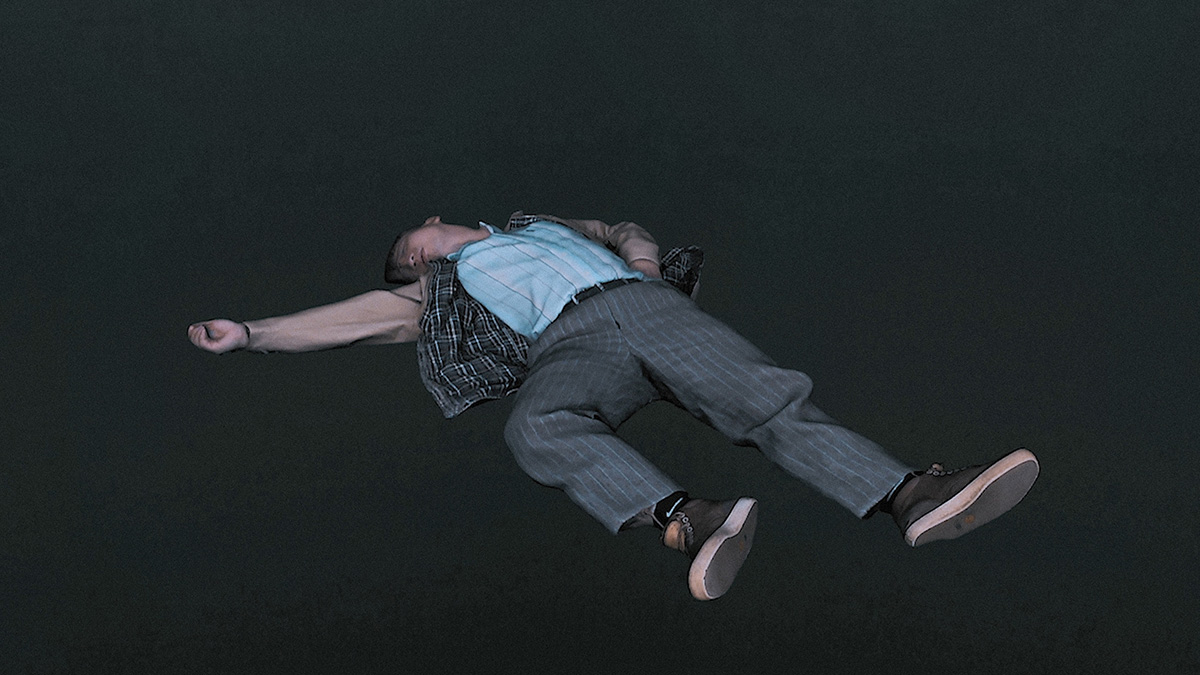

Che-yu Hsu
The Making of Crime Scenes
Doc. expérimental | 0 | couleur | 21:56 | Taiwan, France | 2022
Starting from a gunman involved in a murder case, I seek to reflect the collective unconscious within society and politics through the gunman's multiple peculiar roles—a filmmaker, a killer, a gangster, and a patriot. In 1984, when Taiwan was still under Martial Law, a Taiwanese American writer Henry Liu was shot to death in his own house in the US by a Taiwanese assassin. Afterward, due to the intervention and investigation of the US government authorities, this case was eventually confirmed to be a political murder jointly committed by the Military Intelligence Bureau and the biggest mafia United Bamboo Gang in Taiwan, as the government paid the mafia to kill Henry Liu. The protagonist of this work, Wu Dun, is the assassin who fired the shot at the time. After the case was exposed, the Taiwanese authorities were pressured by the US, and Wu Dun was thus sentenced to life imprisonment. However, he was given amnesty and discharged from prison after six years. After he got out of prison, Wu Dun remained an important member of the United Bamboo Gang, and he established a film company as a producer with the support of his mafia influence, making several “wuxia films” – refers to specific traditional Chinese swordplay films. In this work, I revisited the film studio that was once used by Wu Dun and is now deserted to recompose the fragments of the political assassination and the scenes of wuxia films, and I cooperated with a 3D scanning team—their job is to provide forensic scanning service at crime scenes—to make a digital double of Wu Dun.
Hsu Che-Yu (b. 1985) is an artist based in Taipei and Amsterdam. Previously, Hsu obtained a master’s degree from the Graduate Institute of Plastic Arts, Tainan National University of the Arts (Taiwan). Since 2019, he had participated in the residency program in HISK (Ghent, 2019–2020) and Le Fresnoy – Studio national des arts contemporains (Tourcoing, 2020–2022). In 2022, he begins his two-year art residency in Rijksakademie in Amsterdam. Hsu has solo exhibitions at Liang Gallery (Taipei, 2022), Vanguard Gallery (Shanghai, 2020), Taipei Fine Arts Museum (2015), Kuandu Museum of Fine Arts (Taipei, 2012), SAT Society for Arts and Technology (Montreal, 2012). He has participated in the Theater der Welt (Frankfurt, 2023), Bienal de São Paulo (2021), Seoul Mediacity Biennale (2021), Sonsbeek20?24 Quadrennial public program (2021), Techniques of Becoming (Württembergischer Kunstverein, Stuttgart, 2021), VIDEONALE.18 (2021), Shanghai Biennale (2018), London Design Biennale (2018), Asian Art Biennial (Taichung, 2017), and film festivals IFFR International Film Festival Rotterdam (2023, 2022, 2020, 2018), NYFF New York Film Festival (2020)and Rencontres Internationales Paris/Berlin (2020, 2019, 2018). He was awarded the Videonale Award of the Fluentum Collection (Kunstmuseum Bonn, 2021), the Loop Barcelona Video Art Production Award (Han Nefkens Foundation, 2020), the Taishin Annual Grand Prize (Taishin Bank Foundation for Arts and Culture, 2016), and was a finalist for HUGO BOSS ASIA ART (2019).
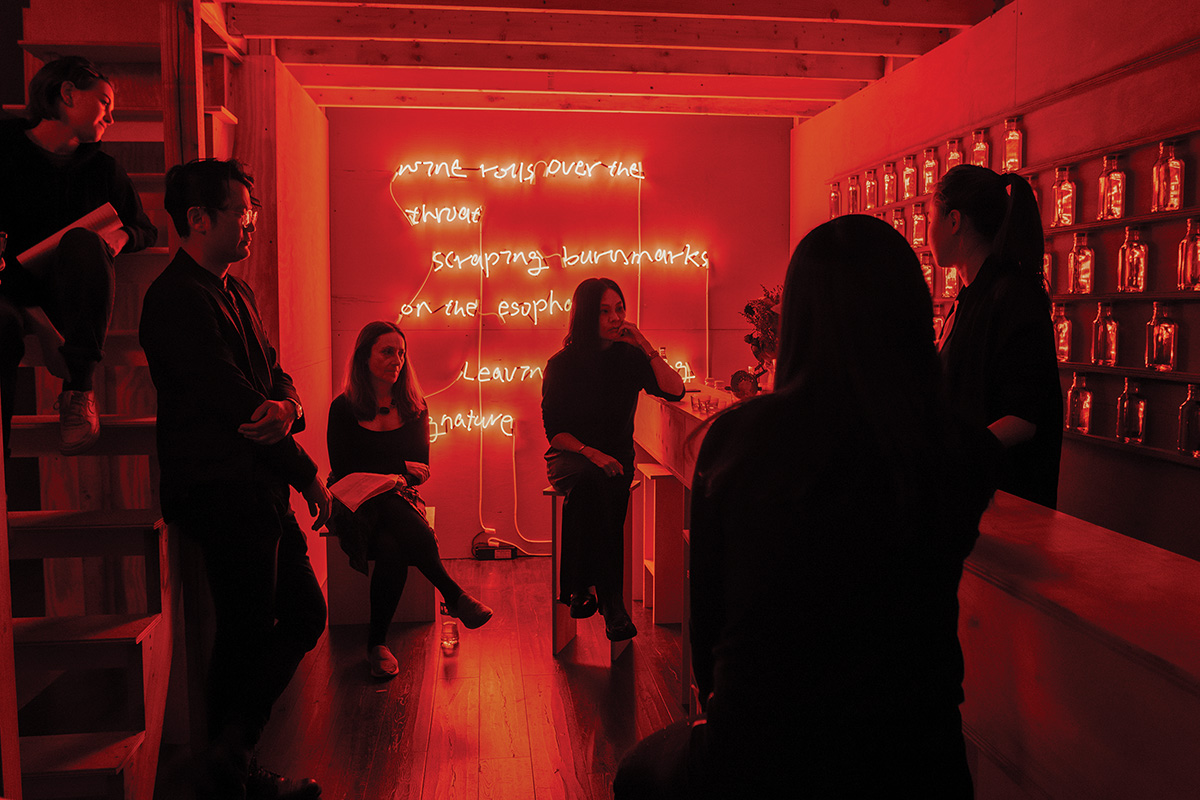

Po-chih Huang
Heaven on Fourth
Installation vidéo | 4k | couleur | 30:42 | Taiwan, USA | 2019
This is the video version of Heaven on Fourth. At “Performa 19” Huang Po-Chih used a non-realistic method to interpret an incident that occurred in the Chinese community of Flushing, New York. Heaven on Fourth took place in six performances, three performances per week. The work was expressed through a variety of forms, including installation, text and live performance. He hired actors, writers, bartenders and a masseuse to reconstruct the incident. The entire performance was based on the story of the Chinese woman Song Yang, an undocumented immigrant who engaged in erotic massage: To avoid being arrested by the police for prostitution again, she leapt from her rented fourth-floor apartment and landed heavily on a street lined with restaurants and erotic massage parlors in Flushing, New York. The title of the work (Heaven on Fourth) alludes to this incident, as well as the name of a massage parlor that was later established in the same apartment. Through this title, he directly explored the many contradictions in society today. Heaven on Fourth was not a typical performance. It defied specific categorization, because it had no script, only five texts. Within this structure, Huang Po-Chih and the four writers used words to open up an ambiguous space that accommodated any plot, any imagining or information, enabling an open-ended examination and review of the life of an inconspicuous character, and telling a story of “human fate at its lowest state.” During the process of performance, the actors read the text in a calm and gentle tone, and at each pause in the recitation, the bartender at the bar invited the audience to taste the cocktails. A massage bed was set up above the bar, and an actor randomly asked audience members if they would like to go upstairs for a massage. In this private mezzanine space, the hired masseuse massaged participants silently, while an actor recited the text softly in their ear. For Huang Po-Chih, the purpose of re-editing the incident with texts rather than a script was to provoke a direct reaction from spectators. However, such a manipulation had the potential to alter the real world. The artist did this deliberately in order to create a socially conscious “artwork.” However, works of art differ from acts of social activism, with their appeal to ideas and attitudes of skepticism. The use of an artistic vocabulary makes it easier for the audience to become engaged with a certain scenario.
Huang Po-Chih (1980 born in Taoyuan, lives and works in Taipei, Taiwan) completed his studies at the Taipei National University of the Arts in Taiwan in 2011. His diverse artistic practice revolves around the circumstances and history of his family which enable him to involve in issues like agriculture, manufacturing, production, consumption, etc. Since 2013, exhibitions of his continuous art project "Five Hundred Lemon Trees" have been transformed into a crowd-funding platform allowing the appropriation of artistic resources for developing an agricultural brand, activating fallow farmland, and growing lemon trees for lemon liquor. On the other hand, the project has connected his family members, local farmers, and consumers to make a new social relationship possible. In the same year, he published his first collection of essays "Blue Skin: My Mother’s Story", the story about his mother. In a way, such a brief account of personal history can somehow reflect Taiwan's agricultural economic reform and social change over the past fifty years, which is essentially, a micro-level of observing his own family history and society as a whole in Taiwan. Huang Po-Chin received the grand prize of the Taipei Arts Award in 2013, was nominated HUGO BOSS Asia arts Award in 2015, and received Prudential Eye Awards in 2016. Huang participated in Taipei Biennale in 2014 and 2016 and has been exhibited internationally including the 8th Shenzhen Sculpture Biennale in China in 2014, Performa 19 in New York in 2019, Busan Biennale in Korea in 2020, also many group exhibitions in museums, e.g., the National Museum of Modern and Contemporary Art (MMCA) in Seoul, the Rockbund Art Museum in Shanghai, CHAT in Hong Kong, the Museum moderner Kunst Stiftung Ludwig Wie (mumok) in Vienna.


Nho Huynh Cong
Immortal
Fiction | mov | couleur | 14:0 | Viet nam | 2022
A 20-year-old boy falls in love with an 18-year-old girl but his family forbids him. The girl threw herself into the sea to keep their love forever. Heartbroken by the death of his lover, he went to the city to work until he was old before returning. While walking by the beach, he imagined the girl returning, the two telling stories, then a tree and disappearing.
Hu?nh Công-Nh? (b. 1991 in ?à N?ng City, Vietnam) started his first approach to art throught cinema. Completely self-taught, atured through the programme Autumn Meeting, a film event for young potential international filmmakers. In 2022, Công-Nh? explores painting as another way of expression. His works draws inspiration from his films, experimenting how an image could change when transforming from moving to still pictures, while still maintaining a direct link to his thoughts and inner world. He emphasizes that individual experiences and choices have a broader responsibility, as well as social and political implications. A recent selection of shows and awards of Hu?nh Công-Nh? includes: Hanoi Grapevine Selection, 2023, Hanoi, Vietnam; Th?ng bé bán kem, Top 14 Excellent Projects - CJ Short films Project, 2023; Top 14 Xinê House Grant, HCMC, Vietnam, 2022; N? Cái Bùm Biennial Art Week, Da Lat, Vietnam, 2022 ; Grandma's Broken Leg, Youth Jury Award - Competition SEA Short Film - 32nd Singapore International Festival Film, 2021 ; Projet de court métrage Ghost Dog, Top 14 Short film project CJ Entertainment, 2021 ; Top 12 Short film project Honor Lotte Cinema, HCMC, Vietnam; 2021.


Sasha Ihnatovich
Not Go Gentle
Documentaire | mov | couleur et n&b | 5:26 | Biélorussie, Slovénie | 2022
Idyllic villages hide traces of sorrow and suffering inflicted on humans by each other. A short film based on stories of people who cross the borders in search of peace, but find humiliation instead. Despite everything they are not giving up.
Sasha Ihnatovich is a feminist filmmaker, educator and visual culture researcher from Belarus, currently working in Slovenia.


Anthony Ing
Jill, Uncredited
Doc. expérimental | digital | couleur | 18:20 | Canada, Royaume-Uni | 2022
Prolific background actor Jill Goldston takes centre stage in this unique portrait. Constructed entirely from Jill’s performances – captured fleetingly in everything from Mr. Bean to The Elephant Man – the film is a lyrical journey through popular culture, and a haunting study of a life lived out of focus.
Anthony Ing is a British and Canadian filmmaker and composer whose work explores existing cultural artefacts with a particular focus on the relationship between identity and performance. Co-founder of production outfit, Loop, they have produced a range of artist-led film and television projects since 2014, receiving awards at the Griersons, BFI London Film Festival and the British Independent Film Awards.
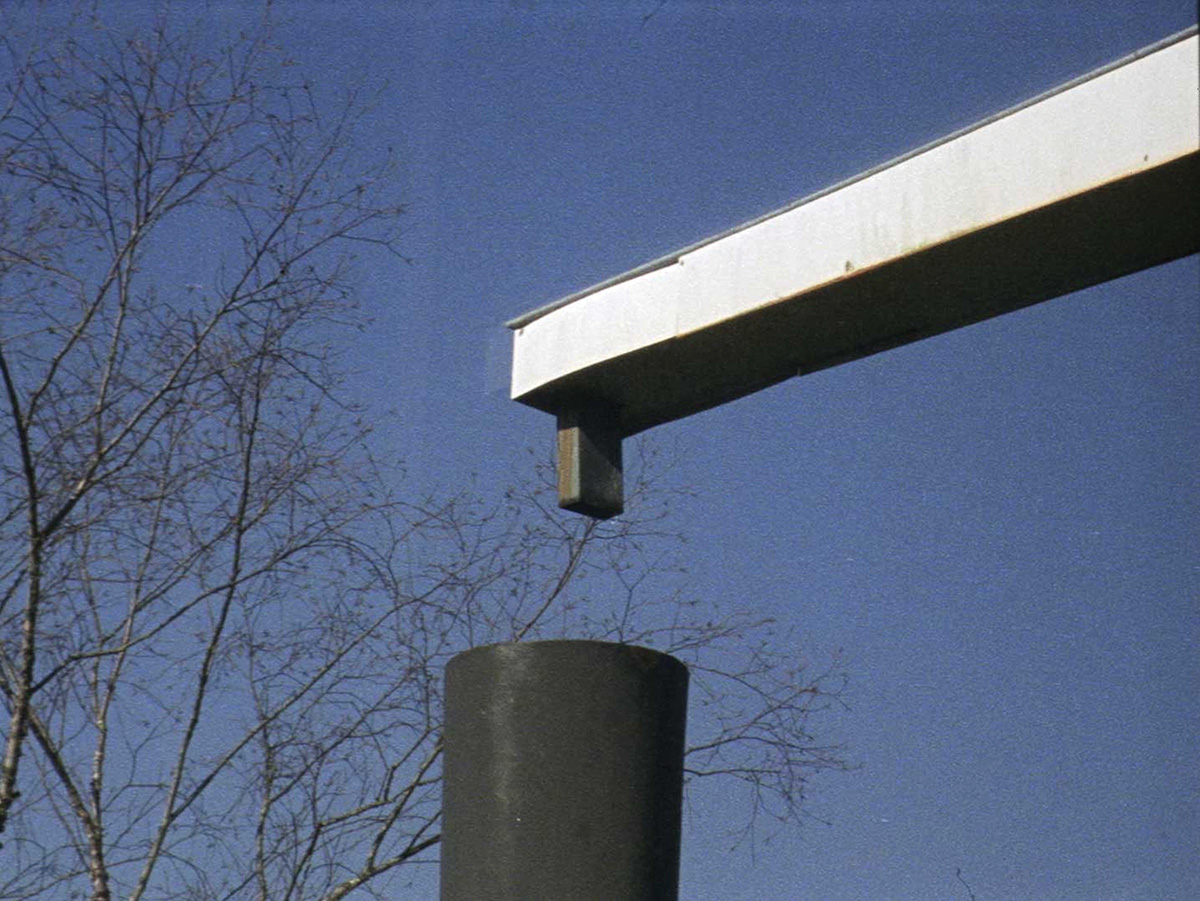

Vaikla Ingel
Papagalo, What's the Time?
Doc. expérimental | 16mm | couleur et n&b | 7:0 | Estonie, Belgique | 2022
Papagalo, what’s the Time? explores the architecture of the former Yugoslavian pavilion from the Brussels World Expo (1958) in its current function as Sint-Pauluscollege. The film follows a group of kids playing old Yugoslavian children’s games at the building. The camera moves from outdoors to the interior spaces, along the hallways from floor to floor exploring the building together with the group of children. The work creates a poetic exchange between the modernist architecture and the contemporary function of the building, between the moving bodies and solid walls.
Ingel Vaikla (1992, Tallinn) is a visual artist and a filmmaker based in Brussels. Vaikla’s practice focuses on the relationship between place, identity and its users, and the representation of space in photography, video and film. She is in constant search for visual language that would not simply observe architecture as aesthetic sculptural form but would explore the existential, conceptual and ideological qualities it can convey. She believes that buildings do not only provide shelter, they are also a mental mediation between the world and us. Her films ‘The House Guard’, ‘Roosenberg’, ‘Double Exposure’, ‘Papagalo, What’s the Time?’ and ‘EUR42’ have been screened at film festivals and art institutions such as IDFA in Amsterdam, Kunsthalle Wien in Vienna, Contemporary Art Museum of Estonia (EKKM) in Tallinn, Tramway in Glasgow, Beursschouwburg in Brussels, Manifesta 13 in Marseille, EMAF in Osnabrück, Videonale in Bonn etc.
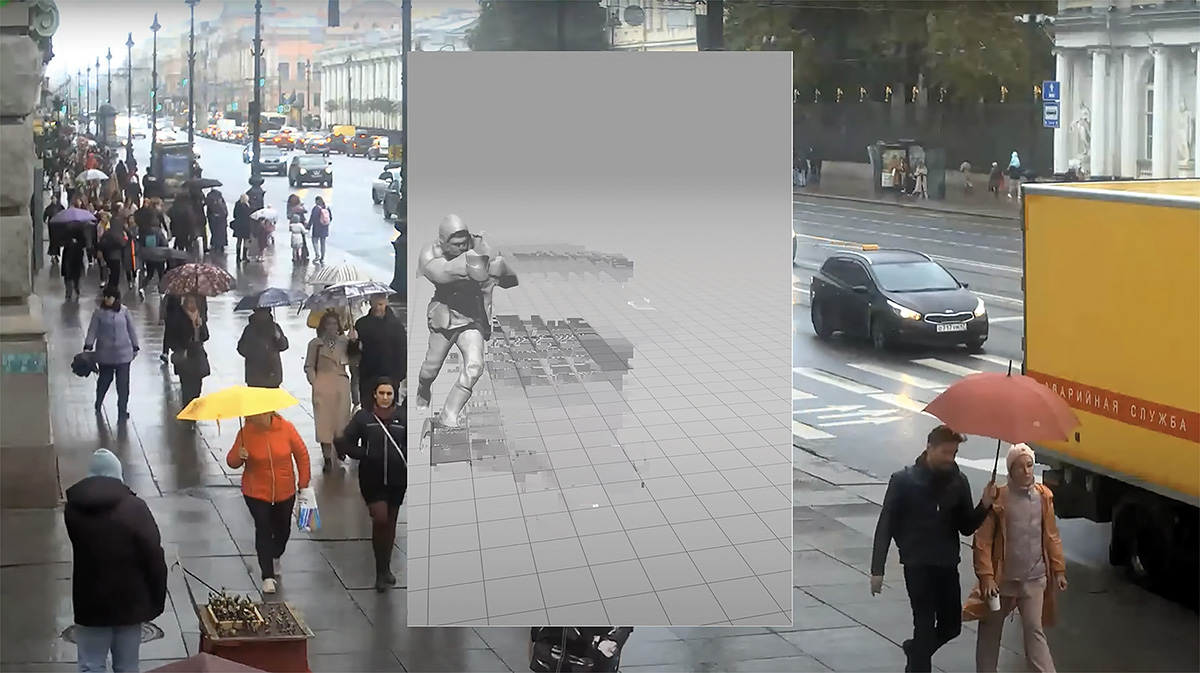

Daria Ivans, Orlikova Polina
(anti)Mobilization
Vidéo expérimentale | mp4 | couleur | 6:21 | Russie | 2022
The video project is dedicated to the current political reality of the war between Russia and Ukraine, in which a lot of people are involved. On September 21, 2022, Vladimir Putin announced a "partial" mobilization. Many of our relatives and friends who did not want to participate in the war found themselves under the threat of being forcibly drawn into the military action. Many managed to escape and avoid this fate, many had to abandon their families to do so, leaving them in uncertainty about the future. Daria and Polina, observing these events both from the inside and from the outside (Polina emigrated to Thailand at the beginning of the war), brought another perspective to their observation - that of surveillance cameras, indifferent and accurate witnesses and instruments of human manipulation, depending on who uses them. Almost a year has passed since the mobilization. We fear the second wave of mobilization and say goodbye in advance to those of our friends who still remain in Russia. We are talking about things that are forbidden to talk about in “our” country, because it's our way of resistance.
Daria Ivans is a xenomedia artist from Saint Petersburg specializing in the magical analysis of digital algorithms, beloved daughter of dispersed Y2K melancholy, interface therapist-researcher of molten Web 1.0, gif-jockey of dig-artifacts and amulets for forging extensions of connections between worlds and points of contemporaneity, cyber-switcher/-scanner of sticky image mutations. She is a bachelor of philosophy, master of "Art & Science." Polina Orlikova (aka Popo) is a young musician currently living and creating in Bangkok. Her interests and productions are laid around discovering and exploring young genres. In her latest path she is looking for the intersections between club and experimental sounds.


Juliane Jaschnow
Rekapitulieren
Doc. expérimental | mp4 | couleur et n&b | 14:52 | Allemagne, Russie | 2020
In April 2017, hundreds of extras on a field near Moscow reconstruct the iconic key scene of Russian war commemoration - the storming of the German Reichstag and the raising of the Soviet flag atop the building. A copy of the Reichstag building erected for this purpose as part of a Russian military recreational park near Moscow is the starting point for “Rekapitulieren” (“Recapitulate”). The work investigates the modelling of collective monuments of memory, the role of image political practices and processes of staging and (re)constructing history. It asks about the ghostly switching points of the past and the ‘identitarian’ intentions with which historical images can be reanimated and used in the present.
Juliane Jaschnow is a filmmaker and artist. Working with film, video, installation, object and print she discusses contemporary and historical image politics as well as collective narratives, memory processes, and their identity-creating dimension. She studied visual arts specializing in expanded cinema and photography at the Leipzig Academy of Visual Arts. Juliane Jaschnow is a graduate of the Professional Media Master Class PMMC for artistic documentary film and the PMMC Lab at the werkleitz Center for Media Arts. Her work has been shown in international festivals and exhibitions such as transmediale Berlin, Deichtorhallen Hamburg, National Gallery Prague, DOK Leipzig, Ars Electronica Linz. She is a member of the Filmic Initiative Leipzig FILZ. www.julianejaschnow.de


Clara Jo
De Anima
Doc. expérimental | 0 | couleur | 29:35 | Allemagne, Myanmar | 2022
"De Anima" spans documentary and animation and features a dreamlike narrative examining how various gendered, racialized, economic, and metabolic systems embedded within the global health system—which have become especially apparent during the COVID-19 crisis—drive fear of contamination from the nonhuman world. The work’s departure point is Jo’s 2018 field research in Myanmar with Smithsonian wildlife veterinarians who were hunting for new strains of coronavirus to predict their pandemic potential. The sacred caves depicted in "De Anima" are both high-risk interfaces as well as sites of spiritual encounter between humans and animals, science and religion, nature and politics—interfaces where ecosystems cross and feed into global conflict. This behind-the-scenes work had been underway for years, and sheds light on the inevitable: not of a why but an unknown when—offering an ominous prelude to the current global health crisis. Recorded in Myanmar, Kenya, and France, the images and sounds featured in "De Anima" that once felt so ‘far away’ now deeply resonate in the everyday. The work exposes subtexts that reveal deeper issues embedded within society at large, namely the neglect and treatment of health beyond the human in an era of accelerated globalization.
Clara Jo's work has been exhibited and screened her work at Gropius Bau (Berlin), Centre Pompidou (Paris), ARKO Art Center (Seoul), Royal Academy of Arts (London), Spike Island (Bristol), Hamburger Bahnhof (Berlin), and Edith-Russ-Haus für Medienkunst (Oldenburg). She has previously held fellowships and residencies at Art Explora (Paris), Akademie Schloss Solitude (Stuttgart), and the Smithsonian Artist Research Fellowship (USA). She has presented her work for talks at the Centre Pompidou (Paris), Stedelijk Museum (Amsterdam), and King’s College (London).
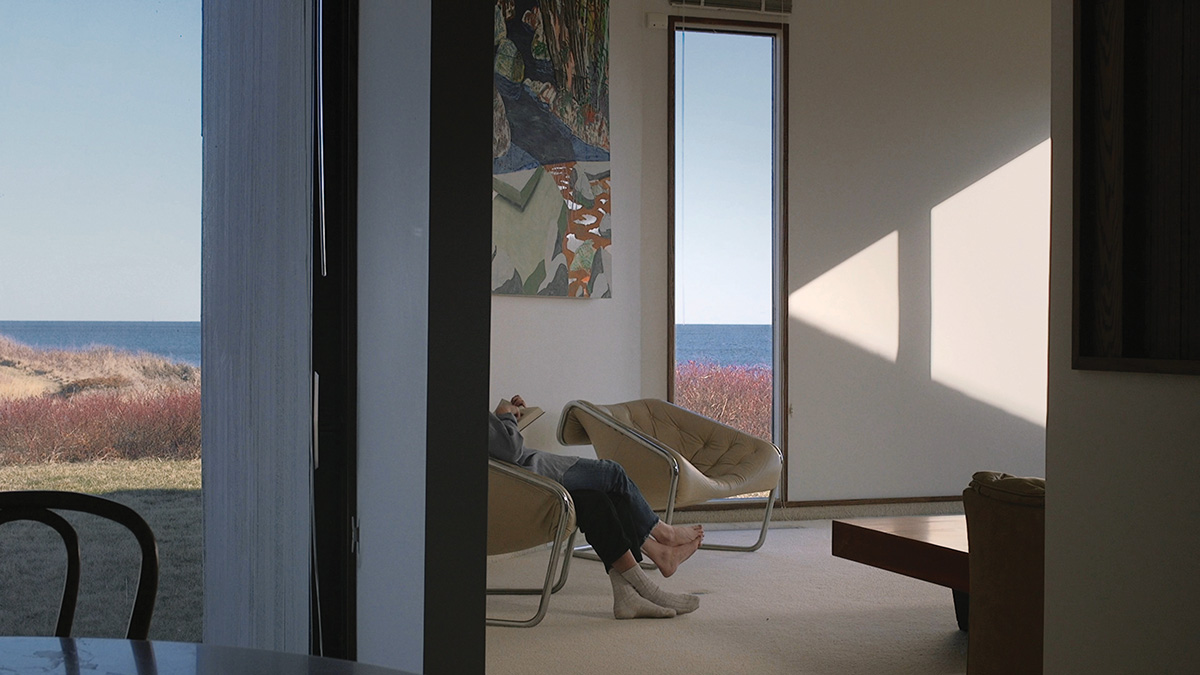

Erin Johnson
To be Sound is to be Solid
Doc. expérimental | mov | couleur | 15:0 | USA | 2022
In To Be Sound Is to Be Solid (2022, 15 minutes), an oceanographer’s attempt to map the entire seafloor by 2030 parallels the filmmaker’s attempt to decipher the opaque queer history of a modernist seaside home through its complicated and circuitous floor plan.
Erin Johnson (b. 1985, US) is a visual artist and filmmaker based in New York who was recently named one of the "25 New Faces of Independent Film" by Filmmaker Magazine. Her short films and immersive installations explore notions of collectivity, dissent, and queer identity. In her shape-shifting videos, constellations of artists, biologists, and film extras address the imbrication of science and nationalism. Johnson received an MFA and Certificate in New Media from UC Berkeley in 2013, attended Skowhegan School of Painting & Sculpture in 2019, and recently completed residencies at Pioneer Works (Brooklyn, NY), Jan van Eyck Academie (Maastricht, NL), Lower Manhattan Community Council (LMCC), Hidrante (San Juan, PR), and Lighthouse Works (Fishers Island NY).


Jessica Johnson, Ermacora, Ryan
Anyox
Doc. expérimental | 35mm | couleur et n&b | 87:0 | Canada | 2022
A former mining town in remote northwest British Columbia, Anyox is now marked by mountainous slag piles accumulated as a byproduct of the early 20th century copper smelting process. ANYOX tracks the daily work of the town’s two sole residents, who organize and salvage value out of this seemingly endless mass of industrial waste. Concurrently, the film unfolds a complex labour history and reveals the vestiges of immense environmental degradation produced by the company town model. ANYOX explores a history of labour press dissemination, activism and the severe reaction from industry and government. Interlacing past and present, ANYOX combines large format cinematography of the contemporary landscape with a study of the archival record, considering the aesthetics it carries, as well as how it reveals and obscures narratives.
Jessica Johnson and Ryan Ermacora are award-winning filmmakers based in Vancouver, BC. Their work investigates the visible and invisible ways in which humans have engraved themselves into the biosphere. Formally, their work is defined by a structural approach to filmmaking, engaging with the optics of cinema while illustrating the experience of labour in dialogue with landscape. Their work has screened at festivals and cinemas including Cinéma du réel, The Walker Art Center, Festival du Nouveau Cinéma, Open City Documentary Festival, DOXA, and VIFF.


Claudia Joskowicz
La niña de sus ojos
Vidéo | 4k | couleur | 18:32 | Bolivie, USA | 2022
La niña de sus ojos (2022) appropriates fragments of the Bolivian folk novel of the same name (Antonio Díaz Villamil, La Paz 1948), that formed an important part of the discourse popular amongst the Bolivian intellectual elites of the period directly preceding the 1952 revolution. The novel, still in use in national pedagogy today, reflects the misogynistic and racist lens that was, and still is, used to impart seemingly democratic projects in Bolivia. Using the house - and home - as a narrative device, along with descriptions of the novel's main characters and the contemporary city of El Alto, this work seeks to locate the viewer between the unrealistic stereotypes described in the book and the true context of El Alto, highlighting the void that still exists today, over half a century later, between political discourse and enacted change.
Claudia Joskowicz is an artist who works primarily with film, video, installation and digital media. Her practice centers on history and its narrative, considering how popular media circulates and shapes collective memory, contemporary history and social realities. Using long and slow video footage and oscillating between film and photography, she reproduces moments captured from global collective memories and personal stories (her own and others’) that have a historical dimension and are anchored in her native Latin American landscape. For most of her career, she has focused on the Latin American landscape, producing work in her home country of Bolivia and South America at large. Her early video work was staged as minimalist reenactments - with attention to the figure and the landscape and focusing on gesture and subtle movement - and has moved towards re-imagined cinematic stagings of landscapes, urban and otherwise, where nuanced political drama unfolds in real time. The landscape and built environment are main characters throughout her work, as are her medium’s structural elements, drawing attention to the media’s role in constructing historical events, and our memories of them. Joskowicz has exhibited widely in the United States and internationally and her work is in the permanent collections of the Guggenheim Museum, NY; the Kadist Foundation, San Francisco, the Cisneros Fontanals Foundation, Miami, and the Banco Central de la República, Bogotá. Joskowicz has received numerous awards and grants including a NYFA Fellowship in film/video, an Anonymous Was a Woman Award, a Cisneros Fontanals Foundation Mid-Career Artist’s Commission, a Guggenheim fellowship in film/video, and a Fulbright Scholar award. She has been a fellow at Yaddo, the Latin American Roaming Art Project, Oaxaca, Mexico, the Sacatar Institute, Bahia, Brazil, the AIM program at the Bronx Museum of the Arts, NY and the LMCC’s Workspace and Paris residencies.


Maren Dagny Juell
Tutorial#14: The Party
Vidéo expérimentale | mp4 | couleur | 9:41 | Norvège | 2021
A surreal post-apocalyptic home party placed in an undefined future where the location is fluid. This work focus on 3D printed replicas of various household plastic objects, common in 2012, which take on a new role in an imagined post plastic future. The party-host guides the party participants through a fragmented story about and relationship with objects. Re-enacting a home party, in a world where this is not possible or relevant. Questioning ideas around Object Orientated Ontology and current collection and valuation of artifacts.
Maren Dagny Juell is an artist working with moving image, installation and VR/AR. Maren is born in Oslo, Norway where she currently has a studio. She received her Fine Art MA from Chelsea College of Art (UK) in 2004. Exhibitions include solo shows at Tenthaus (NO), Atelier Nord Oslo (NO), Trafo Kunsthall (NO), Trøndelag Senter For Samtidskunst (NO), Akershus Kunstnersenter (NO), Podium Oslo (NO) and group shows at Bergen Center for Electronic Arts (NO), Astrup Fearnley Museum of Modern Art (NO) and Stavanger Kunstmuseum (NO) amongst others. She has participated in and made new works for various biennials including; Riga Photography Biennial (LT) 2020, The Australian video Biennial in Melbourne (2017 and 2019), Meta.Morf Trondheim international biennale for art and Technology (NO) 2022 and Art Encounters Biennial, Timisoara Romania 2023.